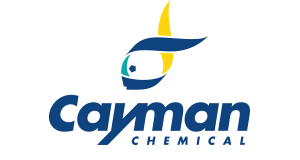Sorafenib-d3, CAS 1130115-44-4
Sorafenib-d3, CAS 1130115-44-4
SKU
CAY34487-5
Packaging Unit
5 mg
Manufacturer
Cayman Chemical
Availability:
loading...
Price is loading...
Shelf life (days): 1460.0
Formulation: A solid
Formal Name: 4-[4-[[[[4-chloro-3-(trifluoromethyl)phenyl]amino]carbonyl]amino]phenoxy]-N-(methyl-d3)-2-pyridinecarboxamide
Purity: ≥99% deuterated forms (d1-d3)
Formula Markup: C21H13ClD3F3N4O3
Formula Weight: 467.842989
CAS Number: 1130115-44-4
Notes: Sorafenib-d3 is intended for use as an internal standard for the quantification of sorafenib (Item No. 10009644) by GC- or LC-MS. Sorafenib is a multi-kinase inhibitor that inhibits Raf-1 and B-RAF (IC50s = 6 and 22 µM, respectively), as well as the receptor tyrosine kinases VEGFR2, VEGFR3, PDGFRβ, FLT3, and c-Kit (IC50s = 90, 15, 20, 57, and 58 nM, respectively).{19941,19945} It is selective for these kinases over 12 other kinases, including ERK1, MEK1, EGFR, and HER2 (IC50s = >10 µM for all).{19945} Sorafenib inhibits proliferation of PLC/PRF/5 and HepG2 cells (IC50s = 6.3 and 4.5 µM, respectively) and induces apoptosis in these cells.{19940} It completely inhibits tumor growth in a PLC/PRF/5 mouse xenograft model when administered at a dose of 30 mg/kg and reduces basic FGF-induced angiogenesis in a Matrigel™ assay in vivo.{19940,58180} Sorafenib (10 µM) induces ferroptotic cell death in HT-1080 fibrosarcoma cells, an effect that can be blocked by the ferroptosis inhibitors ferrostatin-1 (Item No. 17729), deferoxamine (Item No. 14595), and β-mercaptoethanol.{43340} It inhibits glutamate release by the system xc- cystine/glutamate transporter in HT-1080 cells when used at concentrations ranging from 2.5 to 10 µM, decreases glutathione levels, and increases lipid peroxidation. Sorafenib also inhibits replication of hepatitis C virus (HCV) in Huh7.5 cells (IC50 = 7.2 µM).{58181} Formulations containing sorafenib have been used in the treatment of hepatocellular, renal cell, and thyroid carcinomas.
Formulation: A solid
Formal Name: 4-[4-[[[[4-chloro-3-(trifluoromethyl)phenyl]amino]carbonyl]amino]phenoxy]-N-(methyl-d3)-2-pyridinecarboxamide
Purity: ≥99% deuterated forms (d1-d3)
Formula Markup: C21H13ClD3F3N4O3
Formula Weight: 467.842989
CAS Number: 1130115-44-4
Notes: Sorafenib-d3 is intended for use as an internal standard for the quantification of sorafenib (Item No. 10009644) by GC- or LC-MS. Sorafenib is a multi-kinase inhibitor that inhibits Raf-1 and B-RAF (IC50s = 6 and 22 µM, respectively), as well as the receptor tyrosine kinases VEGFR2, VEGFR3, PDGFRβ, FLT3, and c-Kit (IC50s = 90, 15, 20, 57, and 58 nM, respectively).{19941,19945} It is selective for these kinases over 12 other kinases, including ERK1, MEK1, EGFR, and HER2 (IC50s = >10 µM for all).{19945} Sorafenib inhibits proliferation of PLC/PRF/5 and HepG2 cells (IC50s = 6.3 and 4.5 µM, respectively) and induces apoptosis in these cells.{19940} It completely inhibits tumor growth in a PLC/PRF/5 mouse xenograft model when administered at a dose of 30 mg/kg and reduces basic FGF-induced angiogenesis in a Matrigel™ assay in vivo.{19940,58180} Sorafenib (10 µM) induces ferroptotic cell death in HT-1080 fibrosarcoma cells, an effect that can be blocked by the ferroptosis inhibitors ferrostatin-1 (Item No. 17729), deferoxamine (Item No. 14595), and β-mercaptoethanol.{43340} It inhibits glutamate release by the system xc- cystine/glutamate transporter in HT-1080 cells when used at concentrations ranging from 2.5 to 10 µM, decreases glutathione levels, and increases lipid peroxidation. Sorafenib also inhibits replication of hepatitis C virus (HCV) in Huh7.5 cells (IC50 = 7.2 µM).{58181} Formulations containing sorafenib have been used in the treatment of hepatocellular, renal cell, and thyroid carcinomas.

 Deutsch
Deutsch







